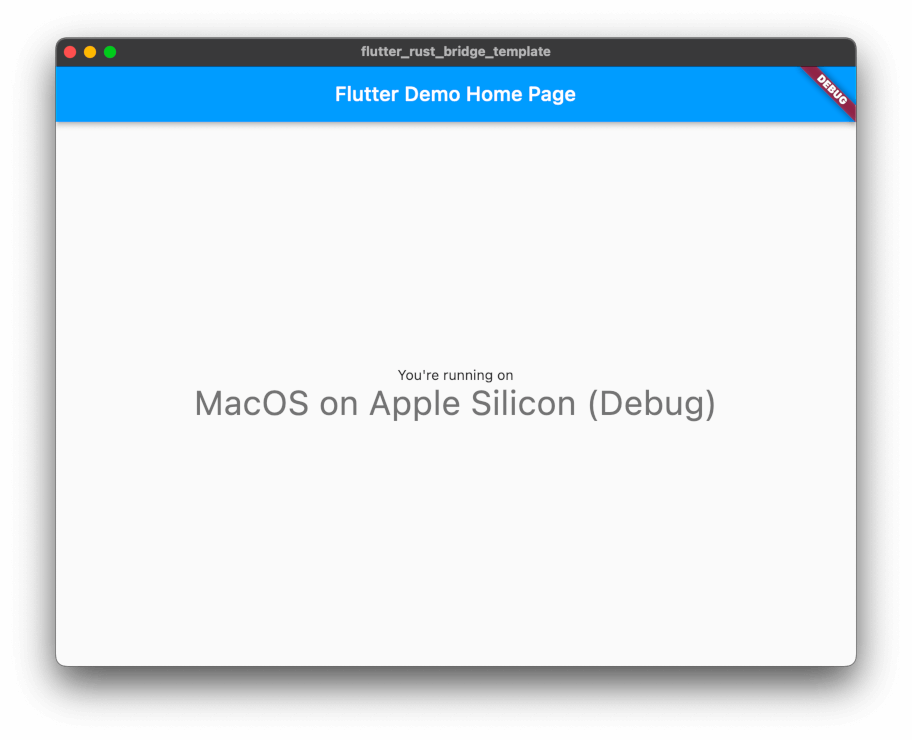收尾
有了对 "平台" 的新定义,我们可以重写以前的代码去使用它!下面是一个例子,展示了 freezed 枚举的使用技巧。
在 lib/main.dart 里:
- final text = const {
- Platform.Android: 'Android',
- Platform.Ios: 'iOS',
- Platform.MacApple: 'MacOS with Apple Silicon',
- Platform.MacIntel: 'MacOS',
- Platform.Windows: 'Windows',
- Platform.Unix: 'Unix',
- Platform.Wasm: 'the Web',
- }[platform] ??
- 'Unknown OS';
+ final text = platform.when(
+ android: () => 'Android',
+ ios: () => 'iOS',
+ macOs: (arch) => 'MacOS on $arch',
+ windows: () => 'Windows',
+ unix: () => 'Unix',
+ wasm: () => 'the Web',
+ );
在 native/src/api.rs 里:
} else if cfg!(target_os = "ios") {
Platform::Ios
} else if cfg!(all(target_os = "macos", target_arch = "aarch64")) {
- Platform::MacApple
+ Platform::MacOs("Apple Silicon".into())
} else if cfg!(target_os = "macos") {
- Platform::MacIntel
+ Platform::MacOs("Intel".into())
} else if cfg!(target_family = "wasm") {
Platform::Wasm
} else if cfg!(unix) {
当你运行 flutter run 后,你应该能看到: 